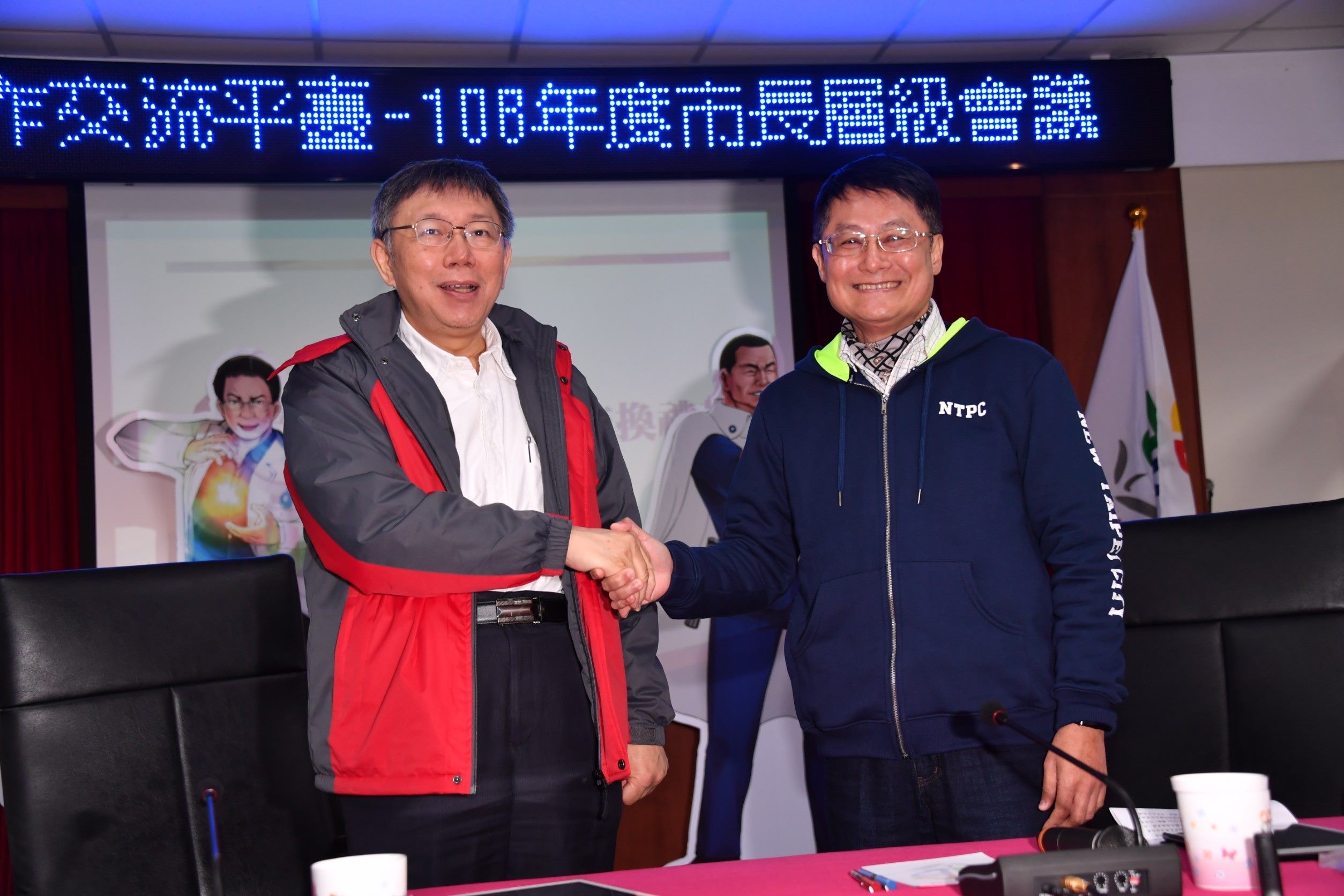Mayor Attends Greater Taipei Cooperation and Exchange Platform
 In the morning of February 23, Mayor Ko Wen-je visited New Taipei Municipal Jui-Fang Industrial High School to attend the 2019 mayoral-level meeting of the Greater Taipei Cooperation and Exchange Platform.
In the morning of February 23, Mayor Ko Wen-je visited New Taipei Municipal Jui-Fang Industrial High School to attend the 2019 mayoral-level meeting of the Greater Taipei Cooperation and Exchange Platform.
In his speech, he recalled that the platform has been in operation for over three years since 2015. Between Taipei City and New Taipei City, which together constitute a single integrated “life circle,” there are many issues that require coordination. Of course, agencies from both municipalities may coordinate such matters among themselves, but it is good to have this platform to discuss and confirm them in writing.
Unable to attend due to illness, New Taipei City Mayor Hou Yu-ih was represented by Deputy Mayor Chen Chin-jun, who presented Mayor Ko with a decorative ceramic plate from Yingge and a small sky lantern from Pingxi. In return, the Taipei City delegation presented their counterpart with a Taipei Fun Pass (a travel pass covering Taipei, New Taipei, and Keelung) and a set of cups from the Taipei City Official Souvenir Collection. The exchange of gifts and pleasantries underscored the friendship and cooperation between both cities.
Mayor Ko further noted in his speech that the bilateral cooperation and exchange platform had discussed 122 issues of cooperation, of which 87 have been resolved and 35 are still in progress. Some major issues cannot be tackled by Taipei alone, as the life circles of capitals and metropoles are always intertwined with those of their surrounding areas. The All Pass Ticket Project, for instance, is an excellent example of such cooperation with the realization of a monthly Greater Taipei public transport pass at the price of TWD 1280.
Another case is the Feitsui Reservoir. Half of the reservoir’s water stock is used by New Taipei City. In fact, the reservoir sits in New Taipei City, but the management rights rest with Taipei City. As each of the municipalities uses about half of the water, there are many issues that need timely coordination.
Other successful cooperation programs include the joint library card system covering libraries in both cities, cooperation among funeral facilities, cross-district disaster prevention, and the Taipei Astronomical Museum’s mobile planetarium. Thus the Greater Taipei Cooperation and Exchange Platform has created plenty of successful cooperation cases in the past. As for the future, there remains much work to be done, such as building mechanisms to deal with large numbers of injured or ill people. Of the eleven large medical centers, nine are located in Taipei City and two in New Taipei City. Therefore, if there were to be an event resulting in a large number of patients, both cities must operate in close cooperation. Since most of the major hospitals are situated in Taipei but more people live in New Taipei, good mechanisms are needed to deal with major disasters, accidents, or disease outbreaks. Incidentally, the Smart City Summit & Expo, to be held in Taipei next month, may be able to offer solutions for Taipei and its valuable partner New Taipei City in this regard.
Mayor Ko believes that, based on the platform’s past successes, many more useful programs and modes of collaboration across the Greater Taipei life circle can be devised. Originally, he felt that meeting in whichever place in the city would do, but Mayor Hou insisted that both delegations would meet at a location on the northeast to take in some sights along the scenic North Coast. “So, here we are today, at the North Coast, and very happy indeed to be here.”
Winding up his speech, Mayor Ko reminded his audience that the next day would be the final day of the Taipei Lantern Festival, while the Yangmingshan Flower Festival is about to begin, and will be followed by the Shilin Official Residence Tulip Show. “So, in return, we welcome you to visit Taipei for some sightseeing, entertainment, and interaction with your neighbors.”

![Taiwan.gov.tw [ open a new window]](/images/egov.png)
